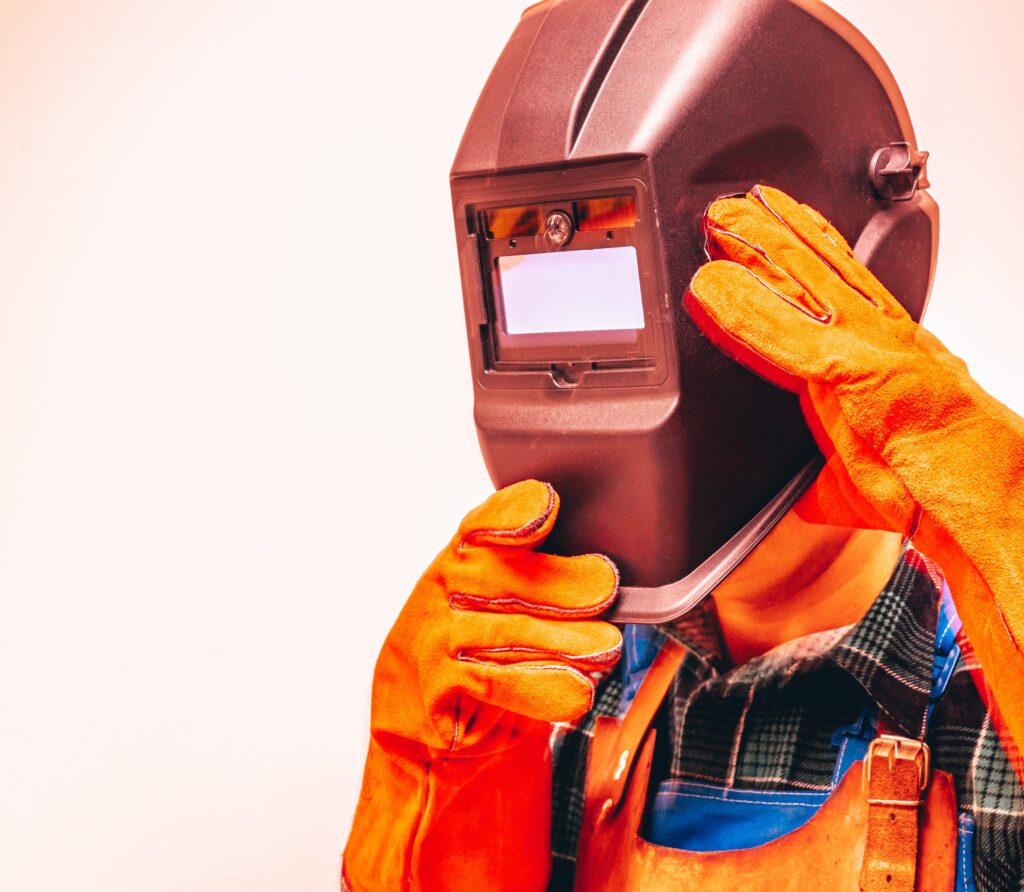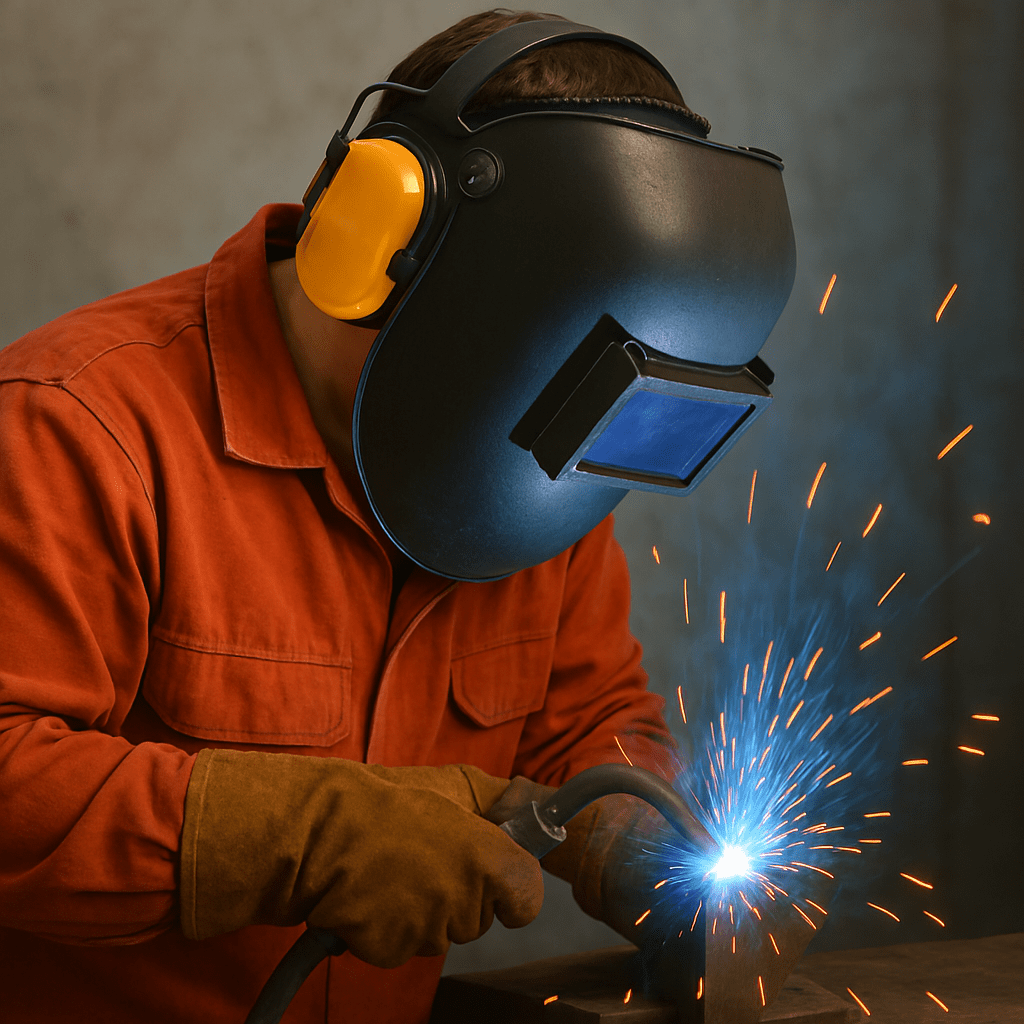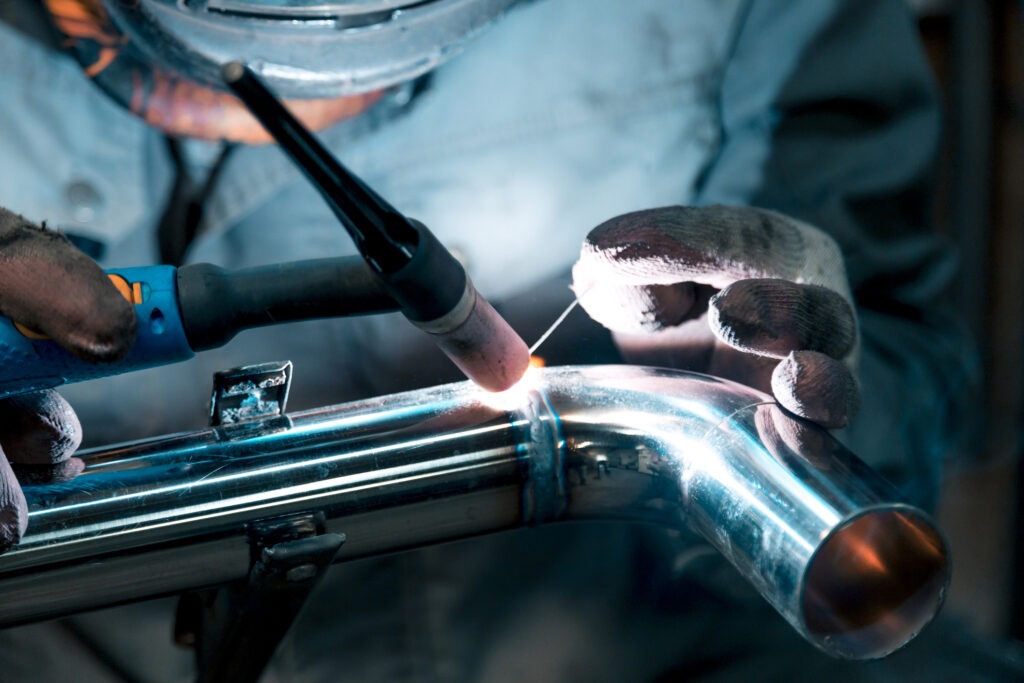Welding Hazards and Safety Risks
Welding involves working with gases, electricity, heat and/or pressure. By its very nature, this entails considerable risks. In this chapter, we take a look at exactly what these risks are and how they can be avoided.
Table of contents
- Welding Hazards and Safety Risks
- What are the dangers of welding in the workplace?
- What risks come from welding fumes and gases?
- How dangerous is noise exposure during welding?
- What are the electrical hazards in welding?
- What risks does UV radiation pose when welding?
- Can welding cause fires or explosions?
Estimated reading time: 7 minutes

What are the dangers of welding in the workplace?
The dangers that occur during welding do not only affect the welders and the workpiece. They also apply to the entire working environment. They range from the inhalation of hazardous vapours and gases to electric shocks and burns.
Employees who are not directly involved in the welding work must also be protected. This is not just about preventing accidents at work. It is also about the long-term effects on health. This can affect staff for the rest of their lives and cause the company to lose employees.
It is therefore necessary to take appropriate safety measures. In addition, people working in an environment where welding is carried out must be informed about the dangers and the measures to avoid them. This must be combined with the necessary professionalism and an insistent realisation of the importance of instruction.
What risks come from welding fumes and gases?
Vapours and gases occur as an unavoidable by-product of most welder processes . Welders are exposed to these during their entire working time and this results in considerable stress over their entire working life.
A typical example is the metal vapour fever. This is triggered by zinc vapours when they react with galvanised metal. Symptoms include body aches, night sweats, nausea and fatigue.
Dangerous vapours and gas cannot always be easily detected by smell. This is because the particles responsible for the odour are often too fine. As a result, they are able to pass directly past the nasal filters and then settle in the lungs.
Appropriate precautions must be taken to avoid illness and damage to health. This includes a cooling fan that blows away all the gases. At the welding work site, a spot extraction system should directly remove the vapours and gases produced there. In addition, there are industrial air cleaners that can remove particles from the air, including those that escape the spot extraction system.
Protective breathing masks should be provided for employees. For the welder, there should also be at least one welding mask. A general air purification system can also provide sufficient air supply and circulation with subsequent cleaning, which then removes anything that has escaped the extraction and other filters when a welder is working in the vicinity.
How dangerous is noise exposure during welding?
In fact, in most cases, welding is not as noisy as other work processes, such as metal grinding. Nevertheless, it should not be trivialised in this respect. The noise generated during welding is still sufficient to cause damage to nerve cells over time. While the immediate damage is rather minor, over the years it can even lead to complete hearing loss.
The risk to hearing is still often underestimated, especially by inexperienced and relatively young personnel. The problem here is that the damage only becomes noticeable years later. However, once it occurs, it can no longer be reversed.
In addition to the welders themselves, all other employees in the working area where welding takes place should also be equipped with hearing protection. This includes instruction on the importance of wearing hearing protection, which must then also be imposed as an obligation.

What are the electrical hazards in welding?
During work, welders and personnel in their working environment are exposed to the risk of electric shock. This can easily happen if a person unintentionally or unknowingly closes an electrical circuit. This can be countered in 3 ways:
- Firstly, exercise caution when working. Nobody should touch the electrode, the electrode holder or the metal parts, neither with bare skin nor with wet clothing. It should become a firm habit to avoid such contact, even if the parts are not conducting current.
- The floor should be well insulated. This means that it cannot close an electrical circuit with the body of a welder or worker as soon as a wire is accidentally touched.
- Finally, welders should always wear gloves when working. These should be undamaged and dry, of course.
What risks does UV radiation pose when welding?
During perspiration, not only visible light but also UV radiation is released. It is essential to protect the skin and eyes from this radiation. Failure to do so can lead to eye damage and skin diseases.
Welding bonnets, protective suits, safety goggles or other protective clothing must therefore be provided for the welders. This also applies to employees working in the immediate vicinity. Welding shields are available for this purpose, which can be worn as a helmet or held by hand. A welding helmet with extraction is even better.
Can welding cause fires or explosions?
A lot of heat is usually released during welding. This means that there is always a risk of fire. Worse still, if there are leaks in pipes, fuel gases and oxygen can mix. This can lead to very large fires or even explosions.
All flammable materials should therefore be removed from work areas where welding is taking place. This includes oil paints, paper, petrol and anything that can catch fire. Even dust is a source of danger. If the dust particles get into the arc being used for welding, they suddenly oxidise. This can lead to flash flames and explosions.
Appropriate fire protection measures must be taken during welding. In addition, welding personnel and employees in the immediate vicinity must be protected from vapours and gases, noise, electricity and UV radiation. Appropriate protective equipment must be distributed and personnel must be instructed on its use and importance.
Related topics:




